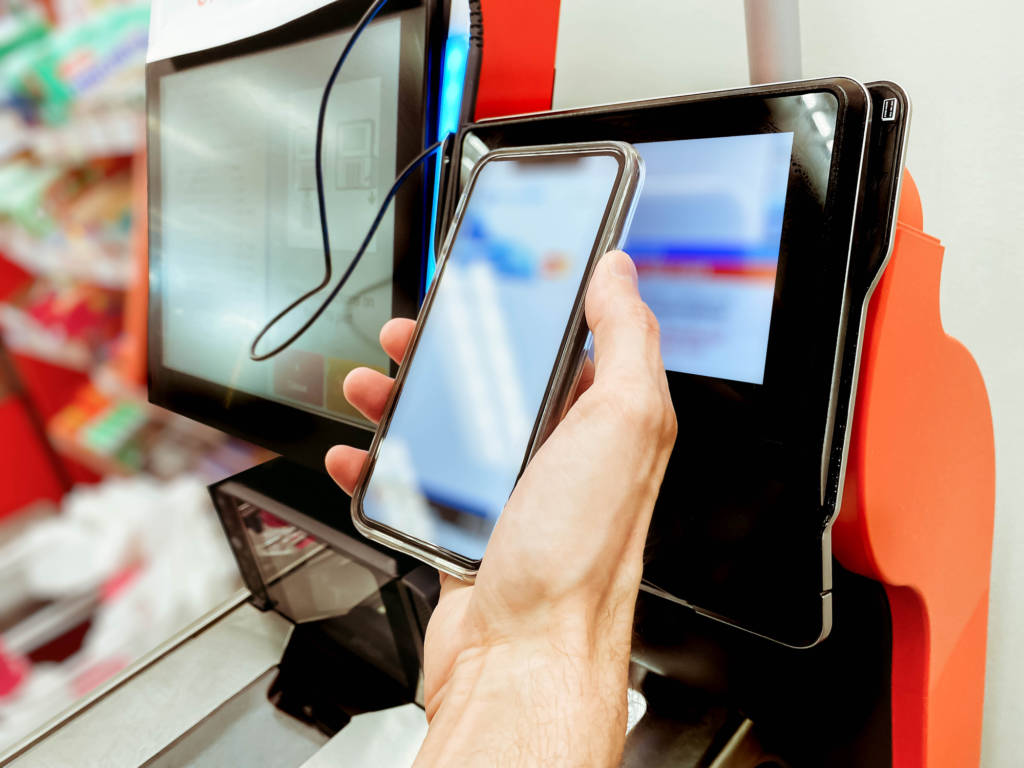- Solutions
- Banking
-
- ACI ConneticUnified cloud payments platform
- AcquiringDigital acceptance, merchant management
- IssuingDigital payments and accounts issuing
- Fraud managementReal-time enterprise fraud management
- RTGS / Wires and cross-borderMulti-bank, multi-currency processing
- Real-time, instant paymentsComplete real-time payments processing
- ATMsSelf-service, omnichannel digital experience
- Central infrastructureInnovative real-time payment infrastructure
- NEW Payment Hubs: Why Banks Must Move Forward With Urgency
-
- Merchant payments
- ACI Payments Orchestration PlatformEnable customer journeys across commerce channels, accept payments, prevent fraud and optimize your payments journey
- In-storeDynamic, modern in-store payments
- eCommerceOnline and mobile payments
- Alternative payment methodsGive more ways to pay
- Value-added servicesEngagement, optimization and reporting
- Fraud managementEnd-to-end fraud orchestration
- Risk, security, and complianceAchieve and maintain compliance
- NEW Datos names ACI Worldwide best-in-class in payments orchestration
- Industries we serve
- Billing and bill payments
- ACI SpeedpayDrive customer satisfaction with the widest range of bill pay options in the industry.
- Bill payment APIs and SDKsOutsource bill payment processing
- Fraud managementAI-based fraud orchestration technology
- Alternative payment methodsGive more ways to pay
- Loan servicingPreferred loan payment options
- Treasury managementStreamline and integrate your back office
- Automated debt collectionImprove your collections process
- Digital walletsManage digital cards and payments
- PCI compliance and securityAchieve and maintain PCI compliance
- Industries We Serve
- Fraud management and payments intelligence
- Fraud managementFraud solutions to minimize risk and prevent fraud
- Fraud management for bankingEnterprise-wide fraud prevention
- Anti-money launderingStay ahead of money-laundering schemes
- Robotic process automationAutomate payment processing operations
- Fraud management in the cloudProtecting your business in the cloud
- Fraud management for merchantsProtect payments from end to end
- ChargebacksPrevent chargebacks before they happen
- SCA complianceAchieve and maintain SCA compliance
- Digital identity solutionsConfirm identities with behavioral analytics
- NEW Scamscope fraud report: APP scam trends from around the globe
CompanyPrime Time for Real-TimeDiscover the Real-Time Landscape in 2024 and Beyond
How are real-time payments redefining the global economy?
CustomersPartners
Home
On This Page
The world of payments has become increasingly complex. With the rise of digital payments and the expansion of eCommerce, there are now more payment methods available than ever before, ranging from credit and debit cards to digital wallets, bank transfers and even cryptocurrencies. Managing all of these payment options can be a challenge, which is where payments orchestration comes in. Payments orchestration is a strategic approach to managing payments designed to simplify the process of managing multiple payment providers, acquirers and banks to maximize payment conversions in the most cost-effective way, making it easier for businesses to accept payments from customers all over the world.
Merchant payments orchestration is a complex process that involves managing multiple payment methods, payment gateways and acquiring banks. This process is crucial for businesses that accept online payments, as it ensures that payments are processed quickly, securely and efficiently.
In this article, we will explore everything merchants need to know about merchant payments orchestration, including its benefits, the different components involved, as well as best practices for implementing a payments orchestration system.
What is payments orchestration?
Payments orchestration platforms typically provide businesses with a single place to monitor and manage multiple payment systems, payment providers and multiple payment methods, allowing merchants to offer customers a wider range of payment options, while simplifying the payment process on the back end. Payments orchestration platforms typically integrate with a wide range of payment providers, including credit card processors, alternative payment methods, digital wallets, real-time payment services (like FedNow in the U.S.), payment gateways and acquiring banks.
There are two schools of thought on how to do this. The first is via an additional layer that pulls in all the information and makes the connections but relies on external systems to modify and process payments. This adds a layer of complexity and still requires modifications within the connected systems. The alternate payments orchestration system type has direct connections via a single integration, offering both connection and functionality in a single platform.
The key to payments orchestration is to allow connectivity to new alternate payments, emerging partnerships and technology providers. Ultimately, this leads to higher conversion, growth and cost management by delivering customer-centric journeys and optimizing payments acceptance. The volume of endpoints that can be connected — such as acquirers, alternative payment models and wallets, as well as customer touch points such as mobile, in-store, Internet of Things and digital — are the most crucial factors.
Another important component of payments orchestration is transaction routing. When a payments request is initiated, the platform uses sophisticated algorithms to evaluate the available payment providers and selects the one that is best suited for the transaction. At its most basic level, routing algorithms involve factors such as the transaction amount, currency, payment method, cost, security, transaction speed and geographical location or specific country. In practice, payments orchestration involves a complex set of processes that work together to ensure that payments are processed quickly, securely and efficiently. This includes everything from choosing the right payments gateway to managing fraud and chargebacks, as well as handling currency conversions and complying with local regulations in different countries.
The goal of payments orchestration is to simplify the payment process for merchants, while ensuring customers have a seamless payments experience, which includes not being wrongfully declined. Thus, the ability to easily configure is also important.
Why payments orchestration is necessary
There are several reasons why payments orchestration is becoming increasingly important for businesses of all sizes. One of the biggest challenges facing businesses today is the sheer number of payment methods available. Customers expect to be able to pay using their preferred payment method, whether that’s a credit card, digital wallet or something else entirely. For businesses, this means having to manage multiple payment gateways and processors, which can be time-consuming and expensive.
Another challenge is the complexity of payment processing. Payment processing involves a number of different steps, from authorizing the payment to settling the funds, and each step can involve multiple parties, including banks, payment processors and other intermediaries. Managing all of these steps can be difficult, particularly for businesses that are just starting out or are unfamiliar with the payment industry.
Payments orchestration is designed to address these challenges by providing a single integration point for multiple payment methods and handling all of the complexities of payment processing on behalf of the business. This can help businesses to reduce costs, simplify the payment process, and offer customers a wider range of payment options.
How payments orchestration works
Payments orchestration platforms typically consist of a variety of different components, each of which play a key role in managing payments. These components may include payment gateways, payment processors, fraud detection systems and currency conversion tools, among others.
- The payments gateway is the first component in the payments orchestration process. A payments gateway is a software application that connects a business’ website or app to the payment processor. It is responsible for securely transmitting payment information from the customer to the payment processor and for providing the customer with feedback on the status of the payment. Payments orchestration platforms typically integrate with multiple payment gateways to ensure businesses can accept payments from a wide range of payment methods.
- The payment processor is the second component in the payments orchestration process. A payment processor is a financial institution or service provider that handles the authorization and settlement of payment transactions. Payment processors typically charge a fee for their services, which may vary depending on the payment method and the volume of transactions processed. Payments orchestration platforms also manage the relationship with various payment providers. This includes setting up accounts with payment providers, managing contracts and monitoring transaction fees. The platform also ensures that payment providers comply with regulatory requirements and industry standards. Platforms should integrate with multiple acquiring banks to ensure payments are processed securely and efficiently.
- Payment method support: Payments orchestration systems support various payment methods, such as credit cards, debit cards, eWallets and bank transfers. This ensures that customers can pay using their preferred payment method.
- Payment routing logic: Payments orchestration systems use sophisticated algorithms to determine the best payments gateway and acquiring bank to route a payment. This decision is based on various factors, such as payment method, transaction amount, currency and geographical location.
- Fraud detection systems are another important component of payments orchestration. Fraud detection systems are designed to identify and prevent fraudulent transactions. They use a variety of techniques, such as machine learning and artificial intelligence, to analyze payments data and detect patterns that may indicate fraudulent activity.
- Currency conversion tools are also important for businesses that operate in multiple countries. These tools allow businesses to accept payments in multiple currencies and automatically convert them into the currency of their choice. This can help businesses to expand into new markets and reach customers all over the world.
- Data analytics and reporting: Another vital part is the ability to understand and improve conversions by analyzing and identifying patterns to improve decision-making. Now that a merchant’s entire payments architecture is consolidated, data analytics and reporting will have a more complete picture. This gives merchants a comprehensive view that can analyze critical KPIs and trends to improve customer experiences and conversion rates.
Benefits of payments orchestration
Merchant payments orchestration offers numerous benefits for businesses that accept online payments. Some of the key benefits include:
Increased payment processing efficiency
One of the primary benefits of payments orchestration is increased payment processing efficiency. By managing multiple payment providers through a centralized platform, businesses can streamline their payment processes and reduce the time and resources required to manage payments.
Improved payment security
Payments orchestration platforms help businesses reduce the risk of fraud and data breaches. They typically offer advanced security features, such as tokenization and encryption, to protect sensitive customer data. By integrating with a sophisticated fraud management platform, a best-of-breed solution can be built using multiple indicators from the entire fraud ecosystem, reducing fraud, while not affecting conversions or creating costly staff reviews.
Better customer experience
Payments orchestration platforms can improve the customer experience by offering a wide range of payment options and ensuring transactions are processed quickly and securely. This can help businesses increase customer satisfaction and loyalty.
Reduced costs
By managing multiple payment providers through a centralized platform, businesses can reduce the costs associated with managing payments. Payments orchestration platforms typically negotiate lower transaction fees with payment providers, resulting in significant cost savings for businesses. Additionally, routing payments through the most cost-effective payments gateway and acquiring bank can result in significant savings over time.
Scalability
Payments orchestration platforms are designed to scale as businesses grow. As transaction volumes increase, payments orchestration platforms can handle the increased load, without requiring significant changes to the underlying infrastructure.
Improved conversion rates
Payments orchestration systems can help businesses improve their conversion rates by routing payments through the best payments gateway and acquiring bank based on the customer’s location and preferred payment method. This ensures customers are presented with a seamless payments experience, increasing the likelihood that they will complete their purchase. Additionally, a sophisticated fraud management platform can recognize good customers and streamline the verification process, further improving conversion rates.
Expansion and growth
Payments orchestration can allow merchants to expand into new markets and provide cross-border payments by quickly adding local payment options and navigating currency exchange rates, taxes and fees.
Stay ahead
Payments orchestration helps merchants deliver emerging technologies quickly and securely. As the market evolves, the system will stay up to date with current and emerging payment methods, making it extremely easy to add or change the checkout options to meet consumer expectations.
No vendor lock-in
The system itself should allow merchants to add best-of-breed options, not limit the business to a specific set of vendors that do not allow the business to pivot, while taking advantage of champion-challenger models to get better pricing and provide resilience for outages or allow for smart dynamic routing for outages, denials or cost savings.
Best practices for implementing merchant payments orchestrations
Implementing a payments orchestration system can be complex, and there are many best practices to consider to ensure success. Here are some best practices to follow:
Understand the business’ payment processing requirements
Before implementing a payments orchestration system, it’s essential to understand the unique payment processing needs and requirements of the business. This includes the types of payment methods they want to accept, the regions or countries they want to serve, as well as the currencies they need to transact in. This information will help them choose the right payments orchestration platform and ensure it meets their business needs.
Choose a flexible payments orchestration platform
A flexible payments orchestration platform is essential for successful implementation. The platform should be able to integrate with a wide range of payment gateways, processors and acquirers and allow for the ability to add new payment methods as needed. It should also be able to handle complex payment flows, such as split payments and refunds.
Choose the right payment gateways and acquiring banks
When selecting payment gateways and acquiring banks, consider factors such as cost, security and reliability. It’s also essential to ensure the payments gateway and acquiring bank support the payment methods and currencies the business wants to accept. To guarantee maximum flexibility and redundancy, integrate with multiple payment gateways and acquiring banks. This ensures payments can be processed quickly and securely, even if one payments gateway or acquiring bank experiences an outage.
Ensure payment security and compliance
Payments security and compliance are critical when it comes to payments orchestration. Ensure that the platform is PCI-compliant and meets the latest security standards. It is also important to understand the local regulations for the regions the business will be operating in and ensure the payments orchestration system meets these requirements.
Test and optimize payment flows
Testing and optimizing payment flows is crucial for ensuring a seamless customer experience. This includes testing different payment methods and optimizing the checkout process to reduce friction and increase conversions. It is also important to monitor payment success rates and identify any issues that may be causing payment failures.
Provide multichannel support
Merchants should consider providing multichannel support for payments orchestration. This includes offering payment options across various channels, such as mobile apps, eCommerce sites and brick-and-mortar stores. By providing a consistent payments experience across channels, merchants can improve customer satisfaction and loyalty.
Summary
In conclusion, payments orchestration is an essential tool for businesses looking to streamline their payment processes, improve the customer experience and reduce costs. By managing multiple payment providers through a centralized platform, businesses can ensure transactions are processed quickly and securely, while also offering a wide range of payment options to their customers. Remember that not all payments orchestration platforms are alike – some are pivoting to the latest buzzword, while others limit options to the narrow list of payment processors they work with by default, and the business has to code any additional connectors. A gateway is not a payments orchestration platform. It’s confusing to some, as gateways offer a range of features, including fraud protection, currency conversion and recurring billing. They also support a variety of payment methods, including credit and debit cards, eWallets and bank transfers, but in the end, they don’t offer the sophistication and customization. Plus, they only work with an eCommerce platform, not in-store or omni-commerce. Don’t forget about security – the system should remove you from PCI scope, not expand it. The fraud component should meet all of your fraud KPIs, not favor one KPI at the expense of others. Finally, search for a payments orchestration platform that meets both the current and future needs of the business – one that’s constantly keeping up with alternate payment methods and shifting consumer preferences.




